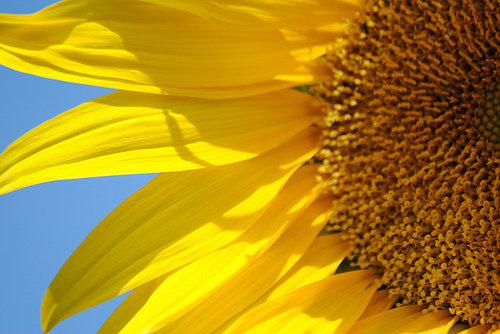EXPLORE: Earth's Energy Comes from the Sun

Where do plants and animals, including humans, get their energy from? Ultimately, it comes from the sun. The chlorophyll found in chloroplasts of producers allows plants to obtain energy from the sun's radiation. Through the process of photosynthesis, plants convert light energy from the sun, carbon dioxide and water into sugars, and release oxygen as a byproduct. Some of that energy is used to produce the structures necessary for life and growth of the plant. About 5% of the energy is stored by the plant. When consumers eat the plant, some of the energy stored in the tissues of the vegetation is passed on to the consumer. For example, when a deer eats the leaves from a tree, the energy stored in the leaves is transferred to the deer. The energy stored in the deer can be transferred to other consumers when the deer is eaten or when it dies and decomposes.
The passage of energy through an ecosystem consumes a lot of energy. At each step, a tremendous amount of energy is used up or lost, which makes it unavailable to the next level of consumers. Of the plant mass that is eaten, only 10% on average is converted into the tissues of the herbivores that eat them and passed up the food chain. The remaining 90% of the energy consumed goes towards maintaining normal life functions or is passed on as waste. And so it goes until, at the top of the food chain, only a small fraction of the energy once absorbed during photosynthesis has been maintained and stored in the tissues of top-level carnivores.
Source:"Energy Flow." Teachers' Domain. 26 Sep. 2003. Web. 26 Aug. 2013. <http://www.teachersdomain.org/resource/tdc02.sci.life.oate.energyflow/>.
After you have completed this part of the lesson, you can check the associated box on the main course page to mark it as complete